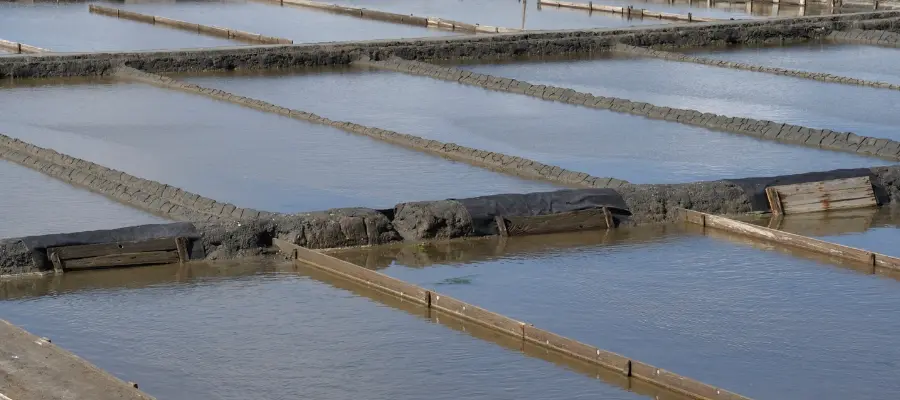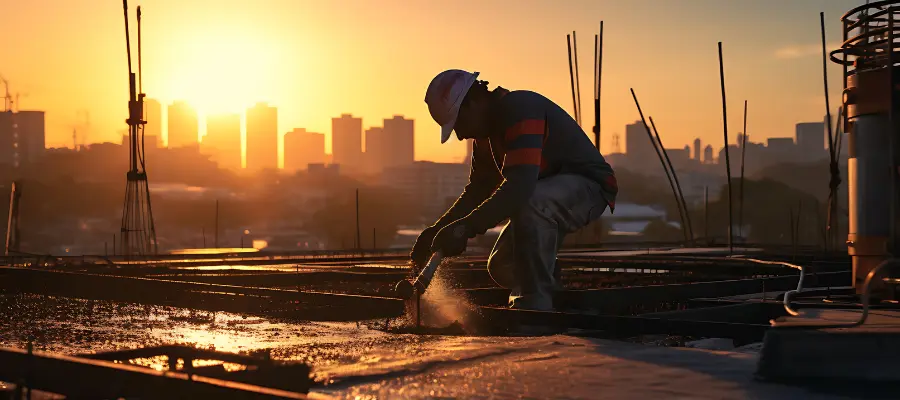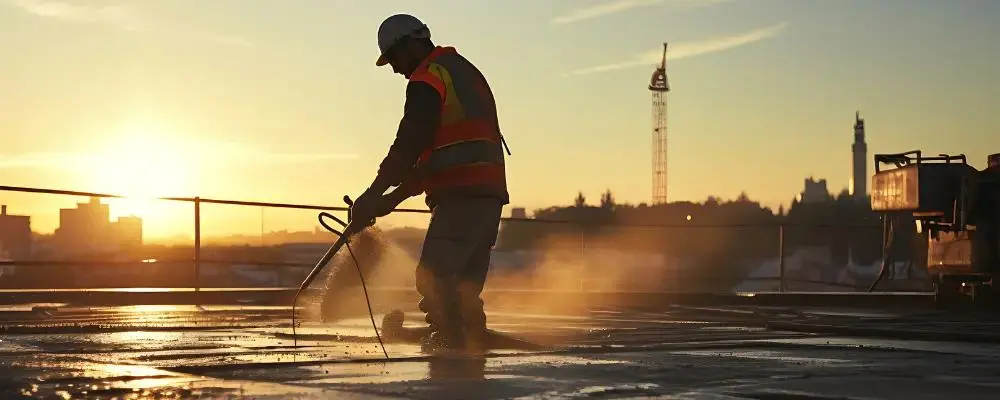When it comes to concrete construction, concrete curing is a very common term used countless times. Have you ever wondered about concrete curing and its different types?
In today’s Brick & Bolt blog, you will explore different types of concrete curing based on the curing methods.
What is Concrete Curing?
The curing of concrete is a stage in construction that prevents the evaporation of water from the concrete as it hardens and maintains moisture in the concrete surface for hydration reactions. Curing is the process that builds the strength of concrete by moisturising its surface. When concrete cures, it absorbs the moisture content to complete its chemical action and achieve its full strength.
Concrete does not reach its intended strength instantly. It takes 24 hours to attain 16% of its intended strength, and it reaches full strength after 28 days.
The primary goal of concrete curing is to avoid water loss and keep the temperature low enough to disperse the heat of hydration. Proper concrete curing is essential for both onsite and offsite construction methods, regardless of the type of concrete used.
Different Types of Concrete Curing
Based on the curing methods, the following are the major types of concrete curing.
- Water Curing
- Wet Covering
- Formwork Curing
- Membrane Curing
- Sheet Curing
- Curing by Absorbing Heat
1. Water Curing

This type of curing is used to avoid drying the concrete surface. It’s generally used for pavements and flat concrete surfaces, when the concrete is thinner.
There are two methods to apply water on concrete.
- Ponding the concrete
- Use of sprinklers
Ponding the Concrete
A small clay bund or water-retaining substance is placed around the concrete surface’s perimeter. The bund divides the entire surface into small parts, and the enclosed areas are filled with water. The process involves continuously soaking the concrete surface rather than allowing it to dry. This approach is particularly effective in dry settings since it eliminates the need to pour water continuously. For ponding concrete, it’s essential to consider factors like choosing the right water tank and implementing rainwater harvesting systems for your home to ensure an adequate water supply.
Use of Sprinklers
Using sprinklers is a necessary step to prevent the concrete surface from drying due to evaporation. The key is to continuously spray water at a constant and uniform rate, ensuring adequate curing. Sprinklers set at the spacing will be used for this purpose.
2. Wet Covering
Wet curing is a method of maintaining surface moisture levels using materials such as hessian and gunnery bags. These coverings will be placed on the concrete surface once it has hardened sufficiently to act as a cover. This approach is suitable for curing vertical surfaces such as concrete columns and walls.
3. Formwork Curing
Formwork is the best method for curing concrete, especially for thick concrete where high heat is generated during curing. This method is cost-effective since the cost is included in the formwork itself. The main challenge is keeping the formwork in place a bit longer.
Formwork curing helps prevent cracking in large concrete structures by providing a more stable curing environment. It is also used to manage heat in thick concrete, ensuring safe and even curing. The thickness of the formwork is decided based on factors like peak temperature and temperature differences.
For thicker concrete, a mockup test is often done before the main construction to monitor temperature changes. The test helps decide on the formwork material, its thickness, the temperature at which concrete should be placed, and measures to reduce heat during curing. This test ensures the conditions are safe and acceptable. Labour costs are an important consideration for formwork installation and removal, which you can estimate using the home construction labour cost guide. For columns, the formwork needs to stay in place longer, which might add to the project’s cost.
4. Membrane Curing
A membrane is generated on the concrete’s surface to prevent moisture from evaporating. Liquid form material is sprayed over the concrete surface, where it solidifies and forms a membrane. These ingredients can be applied using a brush or roller.
There are two kinds of membranes.
- Water-based
- Oil-based
Water-based curing membranes are more popular than oil-based membranes because they can be rinsed off with water after curing, whereas oil-based membranes need more effort to remove. To remove the oil base membranes, they must be acid-etched, sandblasted, or chipped.
5. Sheet Curing
Sheet curing is a type of concrete curing, and two types of sheets are used.
- Polythene Sheet
- Curing Blankets
Both types of sheets are usually used to cure flat surfaces. Polythene sheets are used to cover concrete slabs and columns. The sheet can be properly set on the slab just after it gets hardened. Shelter areas are also created by using polythenes and applying them to concrete. This method allows the concrete to dry naturally. On special occasions, when there is less evaporation and the concrete is not that structurally important, this method can be used.
Plastic sheets can also be used to cover concrete. These sheets are used to cover flat surfaces. Plastic is a watertight and lighter material. In addition, it is easy to handle. Curing blankets protect newly placed concrete. They perform the same function as other sorts of sheets, ensuring that no moisture evaporates from the concrete surface.
6. Curing by Absorbing Heat
Pipes are placed inside the concrete to absorb heat. Water circulates through the concrete and absorbs its heat. This technology is better suited to thick concrete and higher-grade concrete buildings. It lowers the core temperature.
However, these approaches should be cautiously utilised because a quick temperature shift may cause concrete to crack. Continuous monitoring of the water’s temperature provides information about the interior temperature. Depending on the observations, the flow rate can be changed.

Conclusion
Concrete curing determines the strength and durability of concrete structures, making it an essential component of construction. Proper curing processes guarantee that concrete retains adequate moisture and a suitable temperature for hydration, both of which are critical for producing the desired structural qualities. Understanding and executing proper curing techniques allows construction experts to greatly improve the quality and longevity of concrete structures, assuring their safety and functionality for years to come.
If you are seeking long-lasting and durable construction, look no further than Brick & Bolt. As a premier construction service provider in India, Brick & Bolt offers extensive expertise to bring your project to life. Refer to their comprehensive house construction cost guide to plan your budget effectively. They can guide you in choosing the appropriate construction materials and designing house floor plans. Additionally, you can easily estimate your building costs with our exclusive building cost estimator tool.

